Just because the paranormal is the realm of the unexplained doesn’t mean there isn’t any explaining to do. Humans have always sought to give definition to the world around us, and even to the worlds that may be beyond us. As a result, over the course of millennia, we have developed countless theories and told endless stories within the realm of paranormal pop culture, and there have been a lot of misconceptions that have taken root in the public’s consciousness. Believe it or not, even when dealing with the mysterious realm of ghosts, aliens and creatures, there are some things we can fairly confidently label as false. So, to clear up some incorrect assumptions about the unexplained, let’s take a look at the Top 10 Paranormal Myths.
Need to brush up on your paranormal jargon? Check out our paranormal glossary.
1. Paranormal Facts Exist
The term “paranormal” applies to anything currently beyond the range of scientific explanation. So anyone who claims they have access to the rulebook of the paranormal, and that they know a foolproof way of making a ghost go “boo!” is probably a charlatan … or about to be pretty famous. Plenty of researchers -- including reputable scientists -- have compelling theories about unexplained phenomena and are attempting to apply those utilizing the scientific method, but so far, paranormal facts don’t quite exist.
2. Ghosts Only Come Out at Night
There are a lot of reasons to ghost hunt at night: The world quiets down as the day fades away; some locations only let you enter after the close of daytime business hours; it is much creepier at night; and, most importantly, it’s the best time to play with your sweet night vision camera! But if you want to chase ghosts, you can just as effectively do it during the day, according to most paranormal researchers. In fact, it might even be a more effective time because that’s when the dead were probably most alive.
3. There is No Physical Evidence of Bigfoot
While there have not been any bodies found, Bigfoot researchers claim there is quite a bit of physical evidence to suggest the creatures exists -- including hair, blood, tissue, tracks and, yes, poop.There is also a growing community of scientists who believe in Sasquatch, including famed primatologist Dr. Jane Goodall and Dr. Jeffrey Meldrum of Idaho State University, among others. Eric Altman of the Pennsylvania Bigfoot Society stresses that, as far as the lack of physical remains (a dead Sasquatch), fossilization requires very specific conditions and Mother Nature has an effective system of breaking down animal remains in about 10 days -- so a freshly-dead specimen of the already-rare creature would be hard to find.
4. Only Old Buildings are Haunted
A decrepit, ancient Victorian mansion with broken windows, creaky floorboards and moldy furniture may be the best haunted house in Hollywood, but it’s not where ghosts necessarily hang out. Beyond just old houses, researchers claim to have found paranormal evidence in jails, asylums, hospitals, hotels, museums, battleships, cruise liners, cars, roads and forests. New locations can also be haunted, as can the ground where a new building is established. There doesn’t necessarily have to be a death on the property, either. It is widely accepted within the paranormal community that objects and people themselves can be the focus of a haunting.
5. America’s Paranormal Fascination is New
Although the paranormal has become quite popular with the arrival of investigation-based reality shows, America’s fascination dates back to the origins of the nation. The paranormal peaked in the US in the mid-19th and early 20th centuries with the introduction of Spiritualism, a religious philosophy that espoused that communication with the spirit world is positive. Mary Todd Lincoln, Mark Twain and Harry Houdini were among the American celebrities who became part of the paranormal conversation, and the public gathered in homes and auditoriums to connect with the dead in séances. Beyond ghosts, future president Teddy Roosevelt wrote of a frontiersman’s encounter with a Bigfoot-like creature in 1893, and other Sasquatch stories would periodically make their way into the news. Long before the Battle of Los Angeles in 1942 or The Roswell Incident in 1947, “airships” were reported in the skies above America -- and newspaperman S.E. Haydon wrote about the crash of such a ship in Aurora, Texas, in 1897, about 6 years before the Wright Brothers’ first flight.
6. Aliens are Little Green Men in Flying Saucers
Actually, the most popular aliens are little grey men, according to believers. In America, “The Greys” are the archetypes when discussing alien encounters, and were supposedly found in The Roswell Incident. The creatures supposedly have large, black, buggy eyes and a slit for a mouth on their oversized noggin. However, aggressive reptilians and blonde-haired Nordic humanoids have also been reported by eyewitnesses, along with dozens of other alien species. As for the flying saucer part, UFOlogists claim we should add flying crescents, cigar-shaped crafts, triangular ships and a V-shaped craft to the classic flying saucer motif.
7. No One Still Believes in Vampires
The bloodsuckers from folklore have enjoyed a nice comeback in paranormal pop culture in the last few years, but they never completely went away in some societies. Recently, Indian politicians placed a $2,000 bounty on vampires sucking the blood from villagers’ cattle in the town of Dharampuri in Tamil Nadu, which called to mind the 2004 exhumation and subsequent staking of a corpse in Marotinu de Sus, Romania. The supernatural ghouls may not resemble the sexy beasts of “Twilight” and “True Blood,” but they are still very much alive (or undead) in various parts of the world. Even within the United States, there are subcultures of individuals who believe they are among a class of vampire -- with especially active groups in New Orleans and New York City.
8. Modern Zombies are Supernatural
The term “zombie” has been in use for well over a century and, before 1968, applied to seemingly soulless slaves created by Haitian voodoo “magic.” After 1968, when George A. Romero’s Night of the Living Dead was released, the term was forever changed. Modern zombies are the result of an unexplained contagion but are not supernatural. According to zombie expert Matt Mogk of the Zombie Research Society, the modern zombie is a relentlessly aggressive, re-animated human corpse driven by a biological infection. So, supernatural vampires, mummies, Nordic draugrs and all revenants need not apply for brunch with this bunch.
9. Skeptics and Believers Don’t Get Along
There are actually many skeptics involved in the paranormal community, and they are normally welcomed by investigative groups. When the 2 groups operate together, the skeptics can assist in disproving misidentified phenomena. If something cannot be disproven, it then leads believers closer to a possibly legitimate experience. Dave Schrader, host of the popular paranormal radio show Darkness Radio, says paranormal believers are not at war with the “skeptic nation,” and he embraces their input because he’d rather be taken seriously when findings are reviewed. Additionally, most skeptics are confused for cynics but actively want a paranormal experience -- but they want it to be real and not just a false positive.
10. The Paranormal is Bad for Business
Even if the phenomenon is unexplained, the business world is a big believer in the paranormal. Paranormal Tourism, where travelers spend vacation money on pilgrimages to genre conventions and famous hotspots, is an active industry. Instead of shying away from a paranormal reputation, locations are embracing it. Every city seems to have a few ghost tour operations, while haunted house attractions and vampire balls abound, and entire towns in America are defined by their paranormal personalities. The Roswell UFO Festival attracts droves of alien enthusiasts to New Mexico every July. Meanwhile, Point Pleasant, WV, belongs to The Mothman, and Salem, MA, has a tourism industry focused on the infamous witch trials. Zombie walks, runs and obstacle courses (along with proms, protests and pub crawls) are weekly occurrences in cities across America.



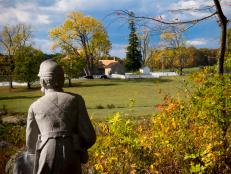
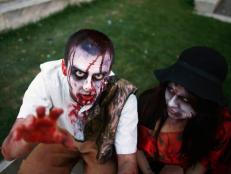
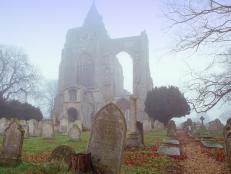
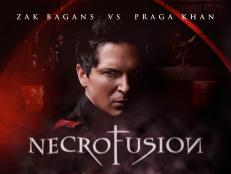

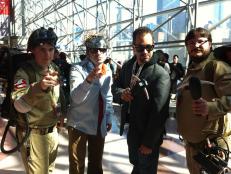
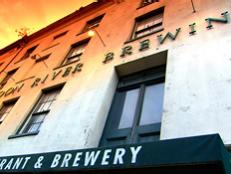
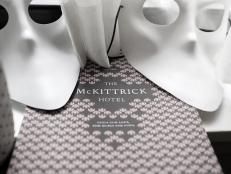
















.jpg.rend.hgtvcom.231.174.suffix/1674758726773.jpeg)











